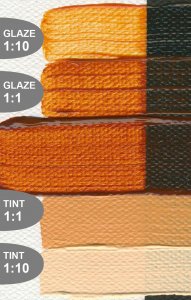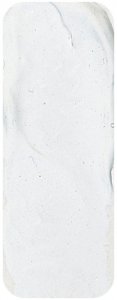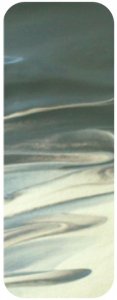Description
"For tens of thousands or more years, Yellow Oxide has been a simple natural clay dug from the ground. Improvements did occur. At first it would have been just any yellowish wet clay found by any local river. Many uses probably required no processing of the natural clay beyond picking out twigs and other larger debris and possibly pounding it between stones to break it up into a usable consistency.
By the time the ancient Egyptians were building pyramids there was a need for a consistent supply of the yellowest possible oxides in large quantities and production was centred around a few special locations with large teams of workers involved in extraction, filtering, grinding, and transportation on an industrial scale. The pigment itself, however was largely unchanged from the oxides used millennia before.
By the late 19th century the growing plastics and house paint industries needed increasing quantities of better quality oxides at the same time as many of the traditional natural sources were showing signs of becoming depleted. This problem was solved in 1921 when patents were granted for the synthetic iron oxide process that is used today. Since the natural ochres were clays, the actual colour component was as little as 20% with the rest being various contaminants. This meant that natural ochre is always slightly browner than the synthetic Yellow Oxide. Besides the more pure coloration, Yellow Oxide also has the property of absorbing light in the UV range and so their usage in plastics and coatings protects the polymers thus extending the life of products used outdoors. The higher proportion of iron oxide in the synthetic Yellow Oxide was thus important for many industrial applications where UV resistance was required including for the growing house paint industry. The need for purity is one of the main reasons why the synthetic pigment has almost completely replaced natural ochre in the industry field and the visual arts.
In the late 20th century the needs of the automotive industry for exciting new colours for cars lead to the marketing of transparent versions of the iron oxides and these have now found their way into artists paints. Transparent versions of the colours were possible since 1921 because the pigment particles are grown slowly and get larger until they reach the required size. In standard Yellow Oxide the pigment is opaque but while the particles are still small in the early stages of production, any paint made from them at that stage will be transparent. This was considered a fault in the early days and so only the larger particle size and therefore opaque Yellow Oxide was marketed. The chemists and business people who made those decisions probably had no idea that artists would have loved the transparent oxides, and since artists are generally not chemists, they tended not to know about the transparency possibilities and therefore did not ask for them. We are fortunate that the automotive industry eventually created the demand and artists became the accidental beneficiaries.
Transparent Yellow Oxide is used on the palette in much the same way that Yellow Oxide is with the obvious difference of the transparency. This does mean some practical differences in usage. When using the colour for making skin tones in a more oil paint like technique it is probably better to use the opaque Yellow Oxide but if working in more of a watercolour like technique then first choice should be the Transparent Yellow Oxide. For all other uses such as mixing greens Transparent Yellow Oxide is a wonderful choice. The transparency allows for glowing undertones to develop which can be both creatively effective as well as visually beautiful. This works particularly well with other transparent pigments. Mixed with Phthalo Blue or Phthalo Green makes darkish greens with a gorgeous lighter green glow in thin passages. Mixing with Aureolin Yellow on the other hand produces a leathery Raw Sienna-l









